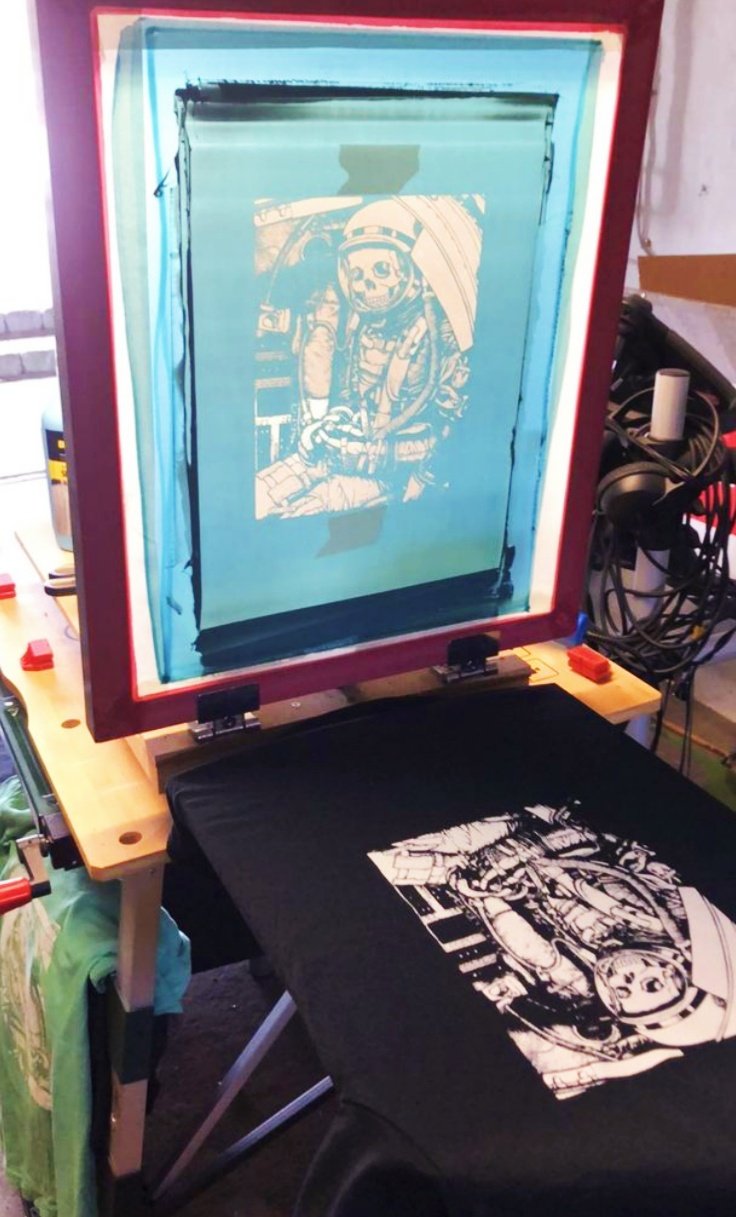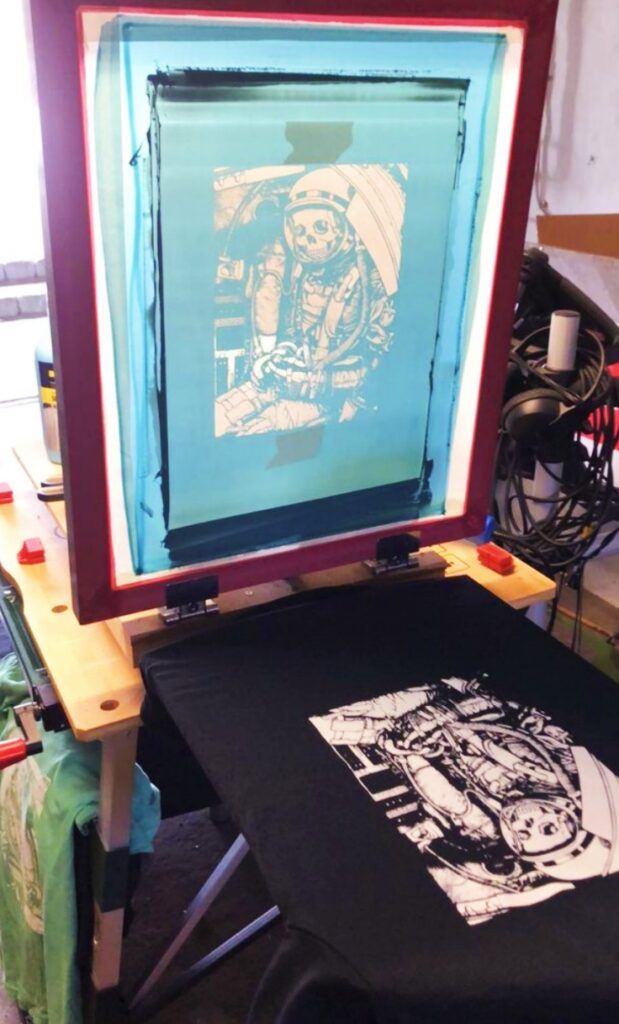Explore the world of flash screen printing, from machines to dryers, and learn how to create stunning prints with ease.
Unveiling the Magic: What Is Flash Screen Printing?
Flash screen printing is a cutting-edge technique that’s rapidly gaining popularity in the printing industry. It involves using intense, controlled heat to quickly cure ink on textiles like t-shirts. Unlike traditional printing methods that require long drying times, flash screen printing allows you to speed up production without compromising on the quality of the print. The result? Vibrant, long-lasting designs that can handle multiple layers of color.
At the core of flash screen printing is a flash screen printing machine. This machine uses high-intensity heat sources to dry and cure the ink between layers, which accelerates the process and ensures that each layer is set properly before the next one is applied. This method is a game-changer, particularly for businesses looking to increase efficiency while maintaining top-notch print quality.
Choosing the Ideal Flash Screen Printing Machine for Your Needs
When it comes to selecting a flash screen printing machine, it’s essential to know what to look for to optimize your print production. These machines are equipped with heat sources such as halogen or infrared lights that ensure quick, even curing of the ink. However, not all machines are created equal, and choosing the best one for your business can make a significant difference.
A key feature to consider is the number of heat heads the machine has. Machines with multiple heat heads allow you to cure larger batches of garments faster, making them ideal for high-volume printing shops. Additionally, machines with adjustable temperature and timer controls give you more flexibility to work with different ink types and fabric materials, ensuring that every print is perfect.
The Secret to Efficient Printing: Best Flash Dryers for Screen Printing
A flash dryer plays an indispensable role in flash screen printing, providing the intense heat required to cure printed ink quickly. Whether you’re printing on t-shirts or other textiles, having the right flash dryer can make or break your efficiency.
The best flash dryers for screen printing are those that offer precise heat control, uniform coverage, and energy efficiency. Ideally, you’ll want a dryer that can handle the specific ink type you’re using—whether it’s plastisol or water-based ink. Compact models are great for small shops, but for larger operations, industrial dryers with larger drying areas can help keep the production line moving smoothly.
Additionally, look for dryers that feature adjustable height and swivel arms, which allow you to position the heat source precisely where it’s needed for optimal curing. This flexibility can be a game-changer for printing on garments of various sizes.
DIY Flash Dryer: Building Your Own Screen Printing Solution
For those looking to take their screen printing game into their own hands, building a homemade flash dryer is a creative and cost-effective solution. With the right tools and materials, you can craft a flash dryer that meets your specific needs, whether you’re just starting out or working on a small scale.
To build your own flash dryer, you’ll need basic components like halogen bulbs or heat lamps, a reflective surface to focus the heat, and a sturdy frame to hold everything in place. While this DIY option can save money, it’s important to ensure the heat is distributed evenly to avoid over-drying or under-curing the ink.
While homemade dryers can be effective for small operations, keep in mind that they may not offer the same level of precision and durability as commercial models. For serious, high-volume printing, you may want to upgrade to a professional-grade flash dryer as your business grows.
Step-by-Step Guide: How to Use a Flash Dryer for Screen Printing
Using a flash dryer correctly is key to achieving top-notch results in screen printing. Here’s a simple guide to help you get the most out of your flash dryer and ensure each design is perfectly cured.
- Position the Flash Dryer: Place the flash dryer above the printed area, making sure the heat source is aligned with the ink. The garment should be properly positioned on the platen to avoid movement during curing.
- Set the Right Temperature: Adjust the temperature of the flash dryer based on the type of ink you’re using. For example, plastisol inks require a higher curing temperature compared to water-based inks.
- Flash Cure the Ink: Turn on the dryer and let it work its magic! Allow the heat to penetrate the ink for a few seconds. The goal is to flash cure the top layer so it’s dry to the touch but still a little tacky.
- Test the Curing: Once the ink has been flashed, lightly touch it to see if it’s fully cured. If the ink doesn’t smudge, you’re good to go.
- العلاج النهائي: After all layers have been printed and flashed, perform a final curing session to ensure the design is durable and ready for wear.
By following these steps, you can ensure your prints come out looking crisp, vibrant, and long-lasting.
Print Like a Pro: Flash Screen Printing for Shirts
One of the standout applications of flash screen printing is shirt printing. Whether you’re designing custom t-shirts for a local brand or mass-producing apparel for a client, flash screen printing delivers high-quality results quickly. The flash dryer’s ability to cure ink between layers means you can create intricate, multi-color designs on shirts with impressive speed.
It’s important to adjust your curing process based on the type of fabric you’re working with. For example, cotton and polyester garments react differently to heat, so adjusting the temperature of your flash dryer ensures optimal results without damaging the fabric. Flash screen printing is also ideal for printing multiple shirts at once, as it allows for faster curing between layers, reducing overall production time.
Exploring the Three Key Types of Screen Printing Techniques

There are various types of screen printing methods, each designed to cater to specific needs and production requirements. Let’s take a closer look at the three primary techniques:
- Flat-Bed Screen Printing: This classic method involves placing the screen flat on the printing surface. It’s great for smaller runs and provides a high level of detail and quality. It’s ideal for printing on t-shirts, posters, and other flat materials.
- طباعة الشاشة الدوارة: Often used in large-scale production environments, rotary screen printing utilizes cylindrical screens that rotate as the material moves through. This method is faster and more efficient for high-volume runs, making it popular in textile manufacturing.
- Inline Screen Printing: Combining screen printing with other processes such as heat transfer or embroidery, inline screen printing offers a way to create multi-step designs in one continuous process. This method is typically used for highly detailed and specialized designs on garments.
Each technique has its benefits, and the right choice depends on your project’s scope and requirements.
Conclusion: Flash Screen Printing – A Powerful Tool for Modern Printing Needs
Flash screen printing is a versatile and efficient technique that allows you to print high-quality designs quickly and effectively. Whether you’re working with a professional flash screen printing machine or creating your own DIY dryer, mastering this technique can elevate your printing business and enhance your workflow.
By understanding how to use a flash dryer, choosing the right equipment, and adapting your process for different fabric types and ink formulas, you can produce durable, vibrant designs on a variety of materials. Flash screen printing is an invaluable tool for both small-scale operations and large businesses, allowing you to keep up with demand while maintaining high standards of quality.






